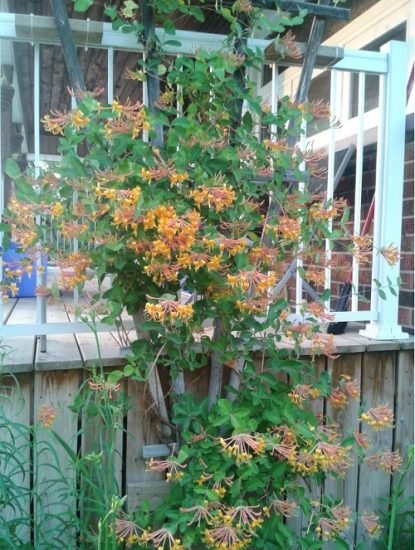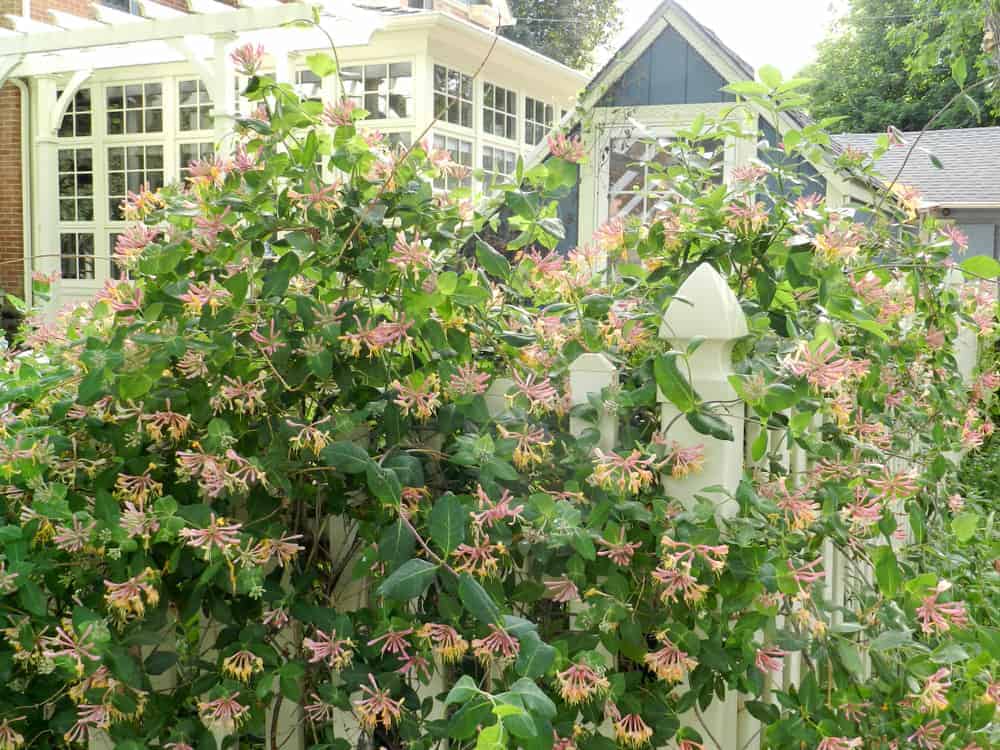Identifying Honeysuckle: A Closer Look
Accurately identifying honeysuckle is crucial, as it’s often mistaken for other plants with similar characteristics. When asking “what does honeysuckle look like,” it’s essential to understand its unique features and differences from similar plants. Honeysuckle’s distinct appearance sets it apart from other climbing vines and shrubs. By recognizing its key characteristics, you can confidently identify honeysuckle and appreciate its beauty. In this article, we’ll delve into the world of honeysuckle, exploring its flowers, leaves, stems, and growth habits to provide a comprehensive understanding of this stunning plant.
How to Recognize Honeysuckle’s Distinctive Flowers
Honeysuckle’s flowers are one of its most striking features, and understanding their shape, color, and arrangement is crucial for accurate identification. The fragrant, white, yellow, pink, or red flowers are typically tubular in shape, with a distinctive curved or trumpet-like appearance. They grow in clusters, often in pairs or triples, and are arranged along the stem in a zigzag pattern. The blooming season for honeysuckle typically occurs in late spring to early summer, with some species blooming in the fall. When asking “what does honeysuckle look like,” the flowers are often the first feature that comes to mind, and their unique characteristics make them a standout in any garden or landscape.
The Leaves and Stems of Honeysuckle: A Detailed Description
When asking “what does honeysuckle look like,” the leaves and stems are often overlooked, but they provide valuable clues for identification. Honeysuckle leaves are typically oval or elliptical in shape, with a pointed tip and a smooth, dark green surface. They can grow up to 4 inches long and are arranged oppositely on the stem, meaning they grow in pairs on either side of the stem. The stems themselves are woody, slender, and often twining, with a reddish-brown color and a smooth, hairless texture. In the winter, the stems may appear bare and woody, but they still retain their characteristic color and texture. Understanding the unique characteristics of honeysuckle’s leaves and stems is essential for accurate identification and appreciation of this beautiful plant.
Honeysuckle Varieties: Understanding the Different Types
With over 180 species of honeysuckle, understanding the different types is essential for appreciating the diversity of this beautiful plant. When asking “what does honeysuckle look like,” the answer can vary greatly depending on the specific species. Some popular varieties include Japanese honeysuckle (Lonicera japonica), American honeysuckle (Lonicera americana), and European honeysuckle (Lonicera europaea). Each species has its unique characteristics, growth habits, and uses in landscaping. For example, Japanese honeysuckle is a fast-growing, evergreen climber often used in ornamental gardens, while American honeysuckle is a deciduous shrub with a more compact growth habit. European honeysuckle, on the other hand, is a semi-evergreen climber with a more delicate appearance. By understanding the different types of honeysuckle, gardeners and nature enthusiasts can better appreciate the unique beauty and characteristics of each species.
Honeysuckle in Different Seasons: What to Expect
As the seasons change, honeysuckle undergoes a transformation that showcases its unique characteristics. In the winter, honeysuckle enters a state of dormancy, with its leaves falling off and its stems becoming bare. This is a crucial time for pruning and maintenance to ensure healthy growth in the spring. When asking “what does honeysuckle look like” in the spring, the answer is a vibrant display of new growth, with bright green leaves and stems bursting forth from the ground. As the weather warms up, honeysuckle’s fragrant flowers begin to bloom, attracting pollinators and adding a splash of color to the landscape. In the summer, honeysuckle is in full bloom, with its flowers and foliage providing a lush, verdant backdrop for outdoor activities. As the seasons transition, honeysuckle’s appearance changes, but its beauty and charm remain constant.
Common Lookalikes: How to Tell Honeysuckle Apart
When asking “what does honeysuckle look like,” it’s essential to be aware of common lookalikes that can be mistaken for this beautiful plant. One of the most common misconceptions is that honeysuckle is similar to trumpet vine (Campsis radicans) or crossvine (Bignonia capreolata). While these plants share some similarities with honeysuckle, such as their climbing habits and showy flowers, they have distinct differences. Trumpet vine, for example, has larger, more trumpet-shaped flowers, whereas crossvine has smaller, more delicate blooms. Another plant often mistaken for honeysuckle is the coral honeysuckle (Corallorhiza odontorhiza), which has smaller, more delicate flowers and a more compact growth habit. By understanding the key differences between these plants, gardeners and nature enthusiasts can accurately identify honeysuckle and appreciate its unique characteristics.
Honeysuckle in Landscaping: Tips for Growing and Care
When it comes to growing and caring for honeysuckle, understanding its specific needs is crucial for optimal performance. One of the most important considerations is soil type, as honeysuckle prefers well-draining soil with a slightly acidic pH. In terms of light requirements, honeysuckle thrives in full sun to partial shade, making it an ideal choice for a variety of landscaping scenarios. Pruning is also essential for maintaining honeysuckle’s shape and promoting healthy growth. Regular pruning can help control the plant’s invasive tendencies and encourage blooming. Additionally, honeysuckle is susceptible to pests like aphids and spider mites, so regular monitoring and management are necessary. By understanding what does honeysuckle look like in different environments and providing the right care, gardeners can enjoy the beauty and fragrance of this stunning plant. With proper care, honeysuckle can become a stunning focal point in any landscape, providing a unique and captivating display of color and scent.
Conclusion: A Deeper Appreciation for Honeysuckle’s Beauty
In conclusion, understanding what does honeysuckle look like is crucial for appreciating its unique characteristics and beauty. By recognizing its distinctive flowers, leaves, and stems, as well as its various species and growth habits, gardeners and nature enthusiasts can gain a deeper appreciation for this stunning plant. Whether used in landscaping or simply admired in its natural habitat, honeysuckle is a true marvel of nature, offering a captivating display of color, fragrance, and beauty. By following the tips and guidelines outlined in this article, readers can unlock the full potential of honeysuckle and enjoy its many wonders. So next time you encounter honeysuckle, take a closer look and appreciate the intricate details that make it such a special plant.


:max_bytes(150000):strip_icc()/japanese-honeysuckle-vines-2132890-06-52e87626dc7f42faba23fab1b842e1f1.jpg)
:max_bytes(150000):strip_icc()/japanese-honeysuckle-vines-2132890-05-3ac7f6ca3359418b932dcac1fb7b3010.jpg)



:max_bytes(150000):strip_icc()/GettyImages-570863839-5b734b7e46e0fb004f8fa04f.jpg)